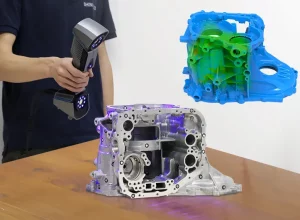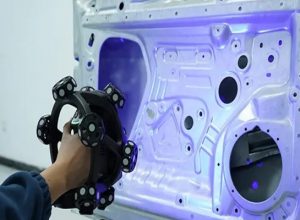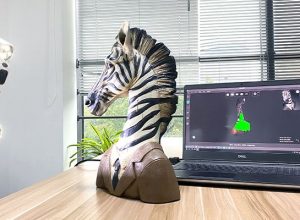Contents
Understanding 3D Scanning Technology
A 3D scanner is a sophisticated device that captures the precise three-dimensional shape and characteristics of physical objects by creating detailed digital representations. This technology transforms real-world objects into accurate computer models, enabling numerous applications across various industries.
Core Principles of 3D Scanning
3D scanners are sophisticated devices designed to capture the precise geometric details of physical objects by systematically collecting surface data points through various scanning technologies. These advanced instruments transform complex three-dimensional objects into digital representations with remarkable accuracy and detail.
Contact Scanning Methods
Contact scanning represents a meticulous approach where physical probes establish direct interaction with an object’s surface. Precision mechanical arms equipped with sensitive measurement points traverse the entire object, methodically recording dimensional information. This technique is particularly valuable in fields requiring extreme measurement precision, such as aerospace engineering, medical device manufacturing, and quality control processes.
Non-Contact Scanning Methods
Non-contact scanners offer versatile approaches to capturing object geometry without physical touching, utilizing advanced optical and computational technologies.
| Scanning Technology | Primary Mechanism | Key Characteristics | Typical Applications |
|---|---|---|---|
| Laser Triangulation | Projects laser lines onto object surface | High precision, works with solid objects | Industrial inspection, reverse engineering |
| Structured Light | Projects coded light patterns | Fast scanning, suitable for complex geometries | Prototyping, 3D modeling, archaeological documentation |
| Photogrammetry | Uses multiple photographs | Captures large objects, lower cost | Architectural documentation, landscape mapping |
Advanced Scanning Considerations
Modern 3D scanning technologies integrate sophisticated algorithms and computational processing to transform raw geometric data into precise digital models. The choice of scanning method depends on factors like object complexity, required resolution, material properties, and intended application.
Scanning Process Details: A Comprehensive Workflow
The 3D scanning workflow is a sophisticated process that transforms physical objects into precise digital representations through a series of meticulously planned stages. Each step requires specialized techniques and advanced technological interventions to ensure high-quality digital reconstruction.
Key Stages of 3D Scanning
- Object Preparation and PositioningSuccessful 3D scanning begins with meticulous object preparation. This critical phase involves cleaning the object, applying specialized scanning markers or reflective materials if necessary, and strategically positioning the item to maximize scanner coverage. Surface properties like color, texture, and reflectivity significantly impact scanning accuracy.
- Scanning Using Selected TechnologyDifferent scanning technologies—such as structured light, laser triangulation, photogrammetry, or computed tomography—are selected based on the object’s complexity, size, and material composition. Each technology captures surface geometry through unique data acquisition methods, generating precise point cloud information.
- Data Processing and Point Cloud GenerationRaw scan data is transformed into a dense point cloud representing the object’s three-dimensional surface. Advanced algorithms align multiple scan perspectives, eliminating inconsistencies and creating a comprehensive spatial representation. Specialized software filters noise and interpolates missing data points.
- Mesh Creation and Surface ReconstructionPoint clouds are converted into polygonal meshes, creating a continuous digital surface. Sophisticated algorithms triangulate points, generating a watertight 3D model with varying levels of detail. This stage determines the model’s geometric accuracy and visual fidelity.
- Post-Processing and OptimizationFinal refinement involves cleaning mesh topology, reducing polygon count, adding texture details, and preparing the model for specific applications like 3D printing, reverse engineering, or digital simulation.
Technical Considerations
| Scanning Parameter | Impact on Result |
|---|---|
| Resolution | Determines level of surface detail captured |
| Accuracy | Measures precision of dimensional representation |
| Scan Angle | Influences completeness of object coverage |
Industrial and Professional Applications
3D scanners find extensive use in multiple domains:
- Automotive design and reverse engineering
- Medical prosthetics and orthotics
- Aerospace component inspection
- Archaeological preservation
- Film and video game character modeling
Technical Considerations
When selecting a 3D scanner, professionals evaluate several critical parameters:
- Scanning accuracy (typically measured in micrometers)
- Resolution capabilities
- Scanning speed
- Compatible object sizes
- Surface type adaptability
Future Technological Trends
Emerging 3D scanning technologies are progressively becoming more compact, affordable, and sophisticated. Innovations in artificial intelligence and machine learning are enhancing scanning algorithms, enabling faster and more accurate digital reconstructions.






